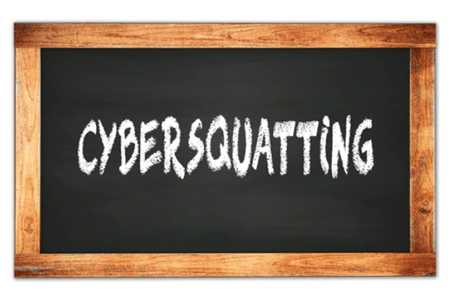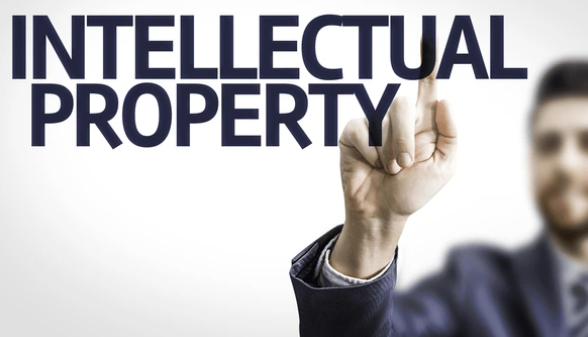Currently, semiconductors act as the foundation for advancements in the technological field such as smartphone…
Growth of Virtual Youtubers and IP Complications
Introduction
In the 21st century, a virtual identity is not a new concept. It varies from creating an alternate persona on a social media account to voicing an animated character in a movie. The idea of the Virtual Individual was explored and popularised by the game Second Life. The sudden growth of Virtual YouTubers (Vtubers) has gained traction, fame and financial stability in a few years.[1] However, this growth also brought an onslaught of new Intellectual Property (IP) issues. YouTube and Twitch as a platform have earned their fame by being a platform to share content and build a community around the content creator. Vtubers have paved their way into the majorly human-centric public figures platform and made Vtubers into public figures. VTubers can be identified and categorised into three types: 1) an Interactive 2D image, 2) A virtual avatar of an existing person, and 3) an entirely virtual character with a unique name and story.[2]
[Image Source : Shutterstock]An interactive or live 2D image is multiple images used in the video instead of a person’s face. In this, the person may choose to reveal their real name and other details which are true for the person. For the second category, the person uses and creates a virtual counterpart of their existing internet personality which is interactive and responsive with expressions and other mannerisms. The third category involves an entirely virtual character with their backstory detached from their owner’s real identity and maintaining their anonymity. The issues pertaining to the rights of VTubers encompass rights to the design of the character, the privacy of the individual, licensing and taking inspiration from an existing character.
Legal Pitfalls in Virtual World
The character design used by a content creator can be designed by an artist, and rights can be transferred from the artist to the creator. A person who employed the artist will be considered the proprietor of the artwork and can register for exclusivity for the same character.[3] The legal pitfall people ignore is the lack of clear communication over the copyrights of the character.
In the recent instance of Projekt Melody and DigitrevX,[4] the VTuber Melody lost her account for a day and her twitch partnership after a DMCA takedown after DigitrevX accused her of IP infringement.[5] The content creator reached out to the artist for a commissioned artwork which is a unique character design. However, the conversation being considered as a contract between them was unclear regarding the IP rights. The creator was vague in terms of rights that they will keep in terms of moral rights or was it an implied license as terms were not clearly stated though there was a transaction. This instance brings out certain questions when will the work be considered as commissioned, contract for service or implied license?
Next Step: Advancement of Virtual Law
The above-mentioned problems can be resolved by the involvement of a lawyer but a lot of VTubers are upcoming content creators who don’t have the finance and the knowledge to be legally aware. They are already burdened with maintaining relevancy on the fast-paced platform. The problem of appropriate rights over the character and their use can be resolved through the transfer of rights by way of NFTs and engaging smart contracts.[6] NFTs as of today don’t provide the exclusive right to the owner to commercialise the artwork. The inclusion of commissioned NFTs with smart contracts to enforce them will provide appropriate rights to the artist as well as the creator.[7]
In absence of smart contracts and NFTs, the creators tend to work under corporations like Holo Live, which provides them with legal advice, a streaming workstation and a platform to voice themselves. In return, the corporation can retain the rights of the VTubers and provide an exit strategy for the person behind the character in case they want to pursue other ventures. This helps the Virtual Character survive even if the original person handling the account leaves the character. The corporation also steps in cases of violation of the IP of the VTuber.[8]
Line between Copying and Inspiration
Recently, VTuber Pekora’s look-alike was seen in an animated series without any consent from the creator or the company.[9] This ensued a violation of IP and lead to the anime removing the character, even if it was just a background character, from all subsequent episodes. This raises a question: Is taking inspiration or look-alike of a human being different from VTubers? The law doesn’t specify 3D or 2D characters as copyrightable, but they can be covered under artistic works as per Section 13 of the Copyright Act. To identify such fictional works, we generally rely upon two tests Character Delineation Test[10] and Story being told Test.[11]
The character delineation test mentions that the character must have conceptual and physical traits, they should be consistent & identifiable, and the character must be unique with distinguishable attributes. The Story being Told Test covers the growth and mannerisms of a character in the fictional works and if the base plot appears to be the same with similar elements being key to the story and not being used as a mere vehicle to move the plot forward then the test is successful, and a claim can be filed.[12] Courts around the world generally apply tests to determine IP infringement.[13]
In the case of a VTuber, the inspiration can be taken from an existing manga or anime however the visible character traits i.e., physical attributes which make the character stand out in the existing artwork must not be the same. If the character looks like any existing character with few cosmetic changes as was the case in “Ashen Pekora” the guilty party must be held liable. In the third category of VTubers, they provide a backstory of their character which if found to be similar to an existing character with similar physical traits should be considered for violation of IP. However, the issue with the story being told arises as it oversteps and covers the personality of a character. Through the use of a Trademark, the physical traits of a character are secured however the personality a priori should not be protected by a trademark.[14]
Conclusion
VTubers are becoming a major part of our entertainment industry and bring their fair share of challenges. The existing IP rights are facing challenges to keep up with the changing world as we move towards the metaverse and Web 3.0. As seen in the ongoing Hermès and MetaBirkins NFT Handbag collection case[15], inspiration in the world of the metaverse is being put through the lens of IP. Theoretically, a VTuber should survive even if the original person leaves the character. However, the personality that person brings can be intertwined with the character opening floodgates to IP violations. There are many more complications to face and it would be interesting to study future cases as they define and shape IP laws of the Metaverse and the hazy line of the Virtual and Real-world.
Author : Mohd Shueab, a student of Faculty of Law, Jamia Millia Islamia, in case of any queries please contact/write back to us via email to chhavi@khuranaandkhurana.com or at IIPRD.
[1] Amanda Silberling, ‘Vtubers are making millions on Youtube and Twitch’ (TechCrunch, 20 August 2022) <https://techcrunch.com/2022/08/20/vtubers-are-making-millions-on-youtube-and-twitch/> accessed 11 October 2022.
[2] Li Zihong’s, ‘Master Thesis: Considering Vtubers Virtual Identity Protection from Criminal Offenses on the Internet as Natural Person’s Personal Identity Protection’ (Hayung’s Academic Blog, 14 July 2022) <https://hayung.tw/papers/dissertation/132/> accessed 11 October 2022.
[3] Section 17 of the Copyright Act, 1957.
[4] Andrew L. Rodenbough, ‘VTubing: Legal Protections and Pitfalls’ (Brooks Pierce, 14 July 2021) <https://www.brookspierce.com/publication-vtubing-legal-protections-and-pitfalls> accessed 11 October 2022.
[5] Jacob Kastrenakes, ‘What Happens When a Virtual Streamer Doesn’t Own Her Body?’ (The Verge, 24 November 2022) <https://www.theverge.com/2020/11/24/21591488/projekt-melody-twitch-ban-copyright-strike-digitrevx-vtuber> accessed 11 October 2022.
[6] Stuart D. Levi & Alex B. Lipton, ‘An Introduction to Smart Contracts and Their Potential and Inherent Limitations’ (Harvard Law School Forum on Corporate Governance, 26 May 2018) <https://corpgov.law.harvard.edu/2018/05/26/an-introduction-to-smart-contracts-and-their-potential-and-inherent-limitations/> accessed 11 October 2022.
[7] Shawaiz Nisar, ‘Metaverse is Virtual Reality World’ (Khurana & Khurana, 17 March 2022) <https://www.khuranaandkhurana.com/2022/03/17/ip-protection-metaverse-is-a-virtual-reality-world/> accessed 11 October 2022.
[8] Franklin Graves & Michael Lee, ‘The Law of Youtubers: The Next Generation of Creators and the Legal Issues They Face’ (2017) 9(5) Landslide, ABA <https://www.americanbar.org/groups/intellectual_property_law/publications/landslide/2016-17/may-june/law-youtubers-next-generation-creators-legal-issues-they-face/> accessed 11 October 2022.
[9] Daryl Harding, ‘Vtuber Pekora Look-Alike to be Removed from How Not to Summon a Demin Lord Episode 2’ (CrunchyRoll, 29 April 2021) <https://www.crunchyroll.com/anime-news/2021/04/29/vtuber-pekora-look-alike-to-be-removed-from-future-broadcasts-of-how-not-to-summon-a-demon-lord-episode-2> accessed 11 October 2022.
[10] Nichols v Universal Pictures Co, 45 F.2d 119 (2d Cir. 1930).
[11] Warner Brothers Pictures Inc. v Columbia Broadcasting System, 216 F.2d 945 (9th Cir. 1954).
[12] Shubham Bokar & Sonal Sodhani, ‘Intellectual Property Rights in Movie/Comic Characters’ (Khurana & Khurana, 4 June 2019) < https://www.khuranaandkhurana.com/2019/06/04/intellectual-property-rights-in-movie-comic-characters/> accessed 11 October 2022.
[13] Timothy B Anderson v Sylvester Stallone, 11 USPQ 2d (BNA) 1161, VT Thomas v Malayala Manorama Co Ltd, AIR 1989 Ker 49, Star India Pvt Ltd v Leo Burnett (India) Pvt Ltd, 2003 (2) BomCR 655, Eastern Book Company v DB Modak, Appeal (civil) 6472 of 2004.
[14] Valentine Labaume, ‘The Protection of Fictional Characters under EU Intellectual Property Law’ (2021) 4(2) SIPLR 34, 44.
[15] Abigail Flores & David S Kim, ‘Meta Bags: NFT Complications and Considerations for Traditional Brand Owners’ (JDSupra, 26 September 2022) < https://www.jdsupra.com/legalnews/meta-bags-nft-complications-and-2469091/> accessed on 11 October 2022.




